I’ve found we have a nightly visitor. Living under a neighbor’s shed I believe.
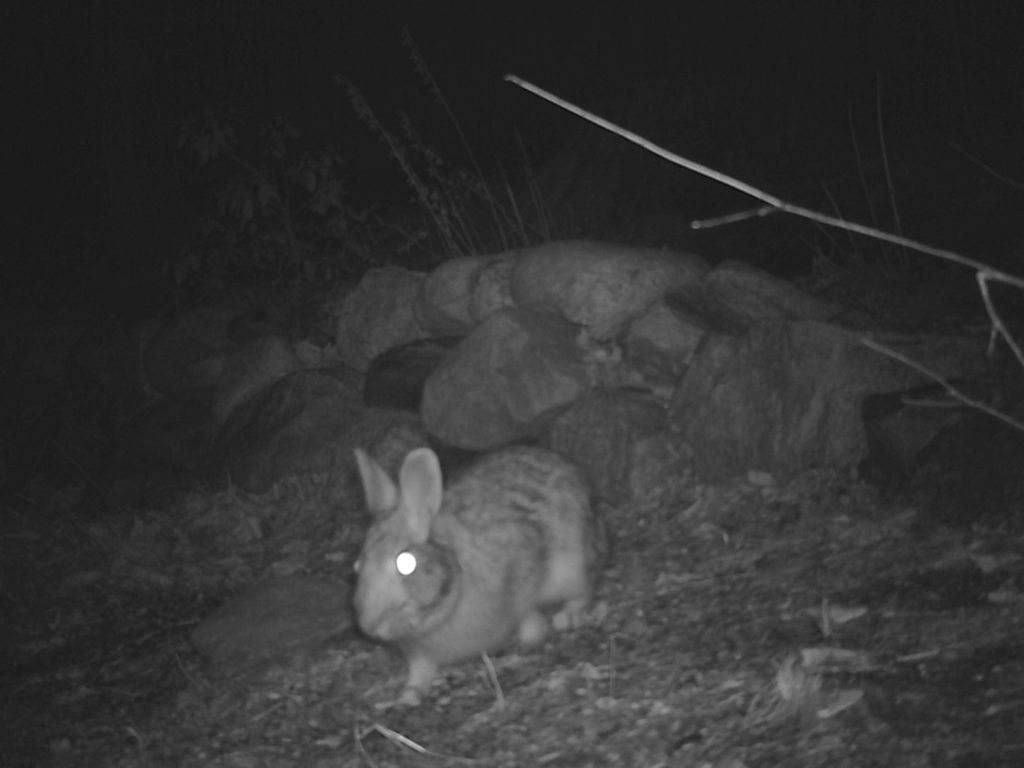
And our chipmunk friend is out and about as well.
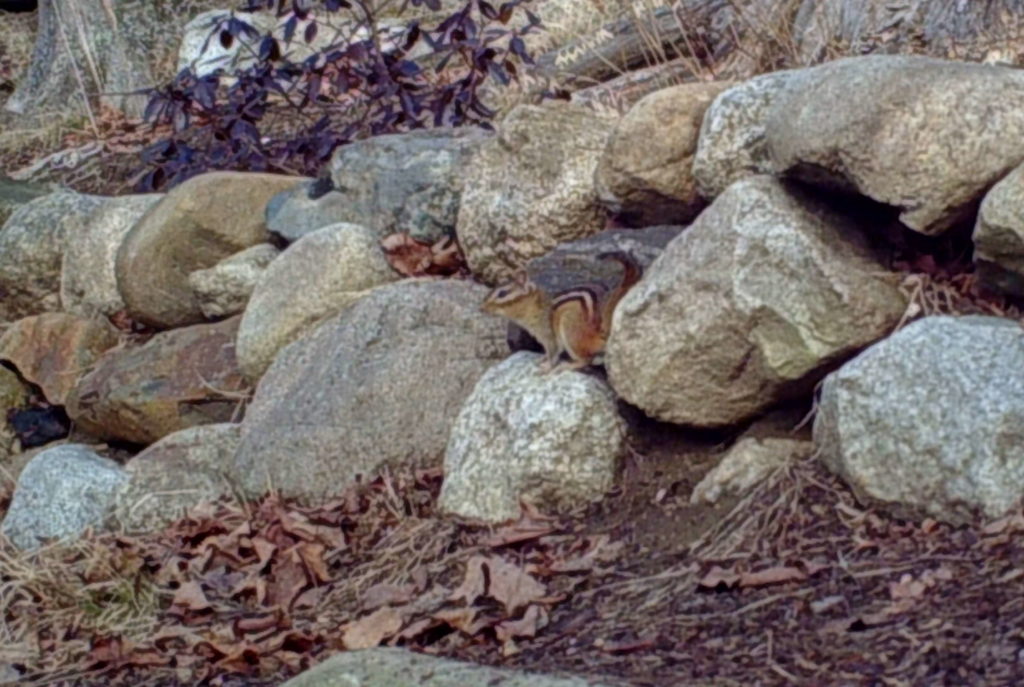
I’ve found we have a nightly visitor. Living under a neighbor’s shed I believe.

And our chipmunk friend is out and about as well.

Six years ago, you would have been hard pressed to find much fungus on our fraction of an acre. Except for the occasional puffball, not much was growing. What a difference shifting from 50 years of chemlawn to a permaculture approach has made! We’ve been composting and recycling our yard waste in place, partly inspired by the raised log beds of hugelkultur. With so much organic material decomposing, this year’s crop of fungus was the most diverse yet.
The increase in ecological diversity is visible across plants and animals as well as fungi. The secret seems to be mostly in leaving things alone and letting nature recolonize in stages. Slugs gave way to toads and earthworms in the first two years. Centipedes and doodlebugs established a presence under every brick and stone in the next two. Skunks still visit us, but now are joined by rabbits, chipmunks, moles, woodchucks, bluebirds and flocks of sparrows.
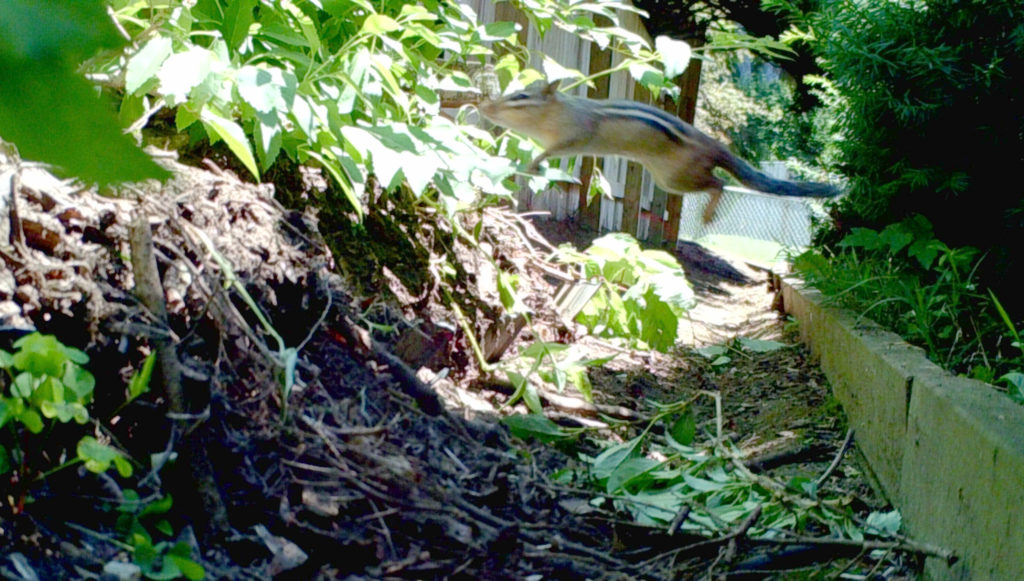
Apparently my yard offers prime habitat for the common chipmunk.
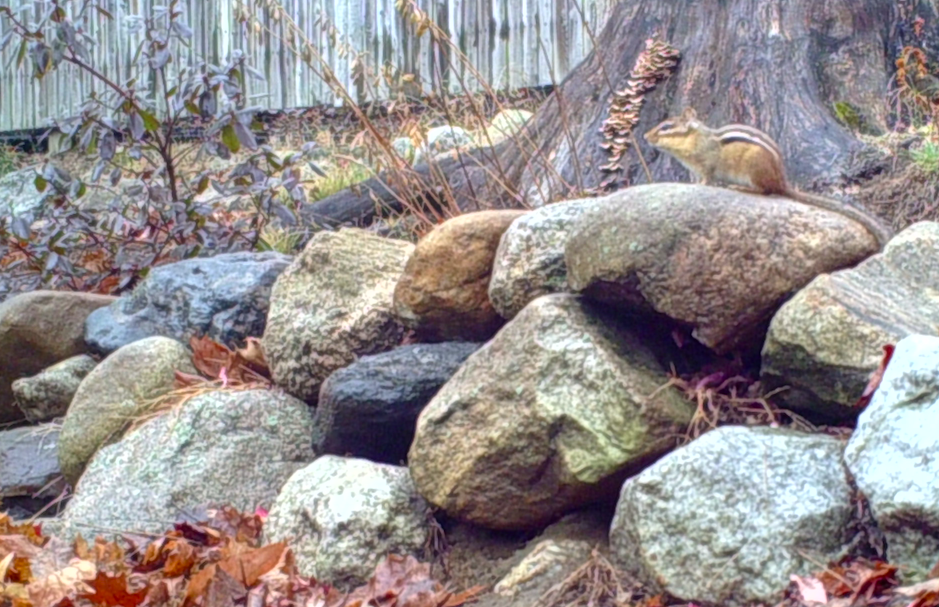
They’ve made a home in my rock wall. Supposedly they hide their tailings by carrying the dirt away in their cheeks. I haven’t witnessed this behavior in action, but dirt piles will often appear below a hole in the wall and then vanish over a period of days.
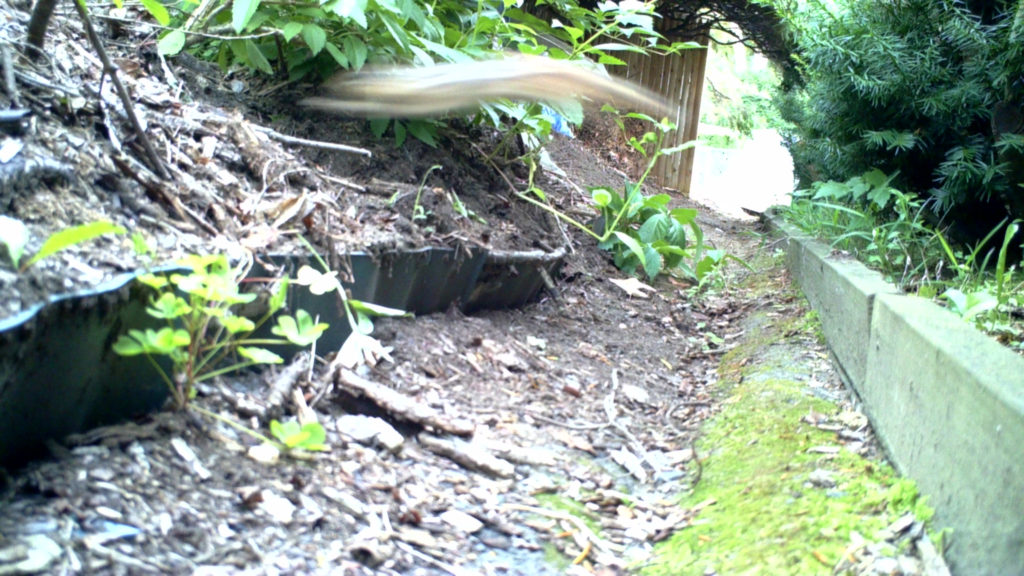
What the trail cam lacks in sophistication and detail, it makes up for in persistence and patience.
These puffballs popped out of my lawn last week. I broke one open this morning and it’s full of black goo. Looks like a little rain ruined the party.
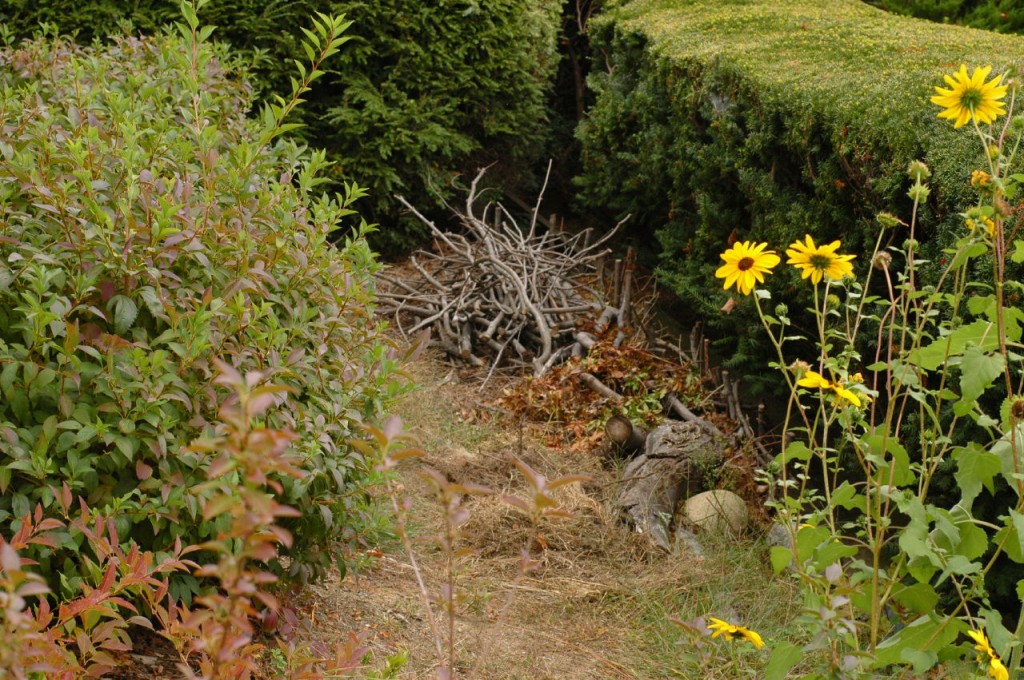 Autumn is upon us, so I set about expanding the leaf weir with the summer’s tree cuttings. Weaving in the branches I had gathered raised the level of the weir by about a foot, and extended it several feet toward the sunflowers. Continue reading Expanding the Leaf Weir
Autumn is upon us, so I set about expanding the leaf weir with the summer’s tree cuttings. Weaving in the branches I had gathered raised the level of the weir by about a foot, and extended it several feet toward the sunflowers. Continue reading Expanding the Leaf Weir
“All the armies that have marched the earth, and quenched its soil with their blood. These boys of our passing days, and all their comrades in arms who are dust. The hordes of Genghis Kahn, the legions of Assisi, the bowmen of Assyria, all the children of today, and of unnumbered yesterdays. All the poets, all the tyrants, all the philosophers, and all the fools. All of mankind who have lived and labored on this planet since the beginning, all have come from this microscopic egg, many many times smaller than a mustard seed.” –In the Beginning, 1937 (USDA Extension Service, Division of Motion Pictures)
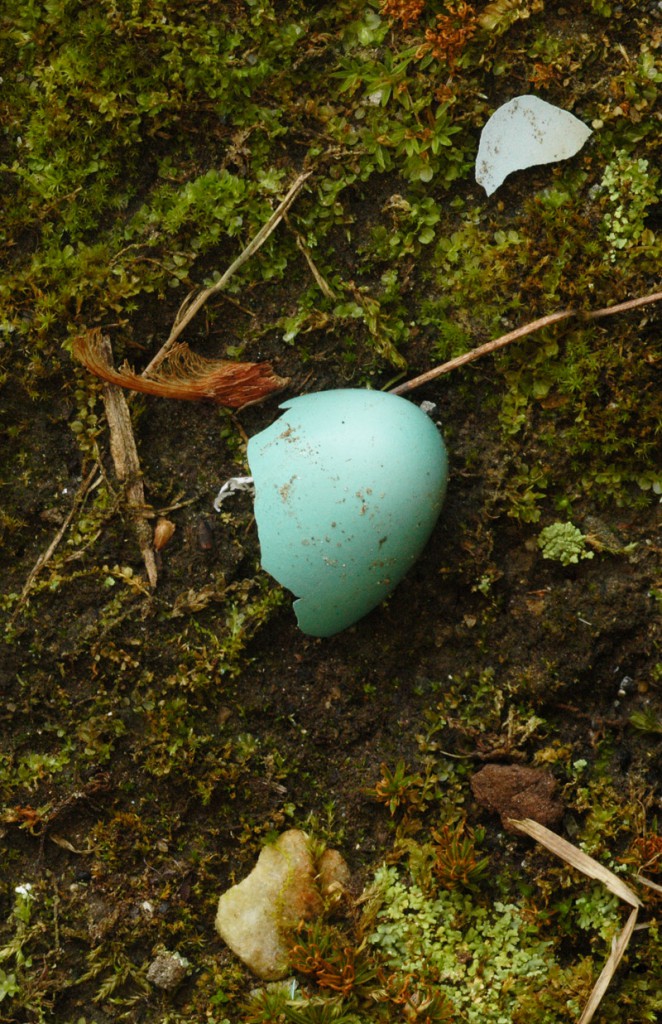
I found this robin’s egg nestled alongside a maple seed, each playing their role in an unbroken chain stretching back billions of years. It reminded me of In the Beginning (1937) which is preserved in the excellent Prelinger Archives. Don’t watch the linked movie unless you can stomach a bit of leporine vivisection.
While science has understood the mechanics of life in broad strokes for centuries, we are still grappling with the implications. Of all the different forms that life has given rise to on this planet, should we be so surprised that human technology is among them? Next to the intricate beauty of a seed or an egg, our tools are crude and simple beings.
One of the most interesting things I’ve learned in starting a garden is the phenomenon of “true leaves.” Many plants start out with two leaflets that correspond to the two halves of their embryo. These are generally simple and rounded in appearance, and serve to get the baby plant going. As it continues to grow, the next set of leaves to emerge are the true leaves, which look like tiny versions of the mature plant. In the case of baby lettuce, they are also extremely cute. Continue reading True Leaves
Wandering around the hillside these days, I’ve seen quite a few animal tracks in the snow. I like the way the rabbits repeated a path until it became a trail, connecting the clear ground by the house to their various destinations in the garden. Time for some camera traps!
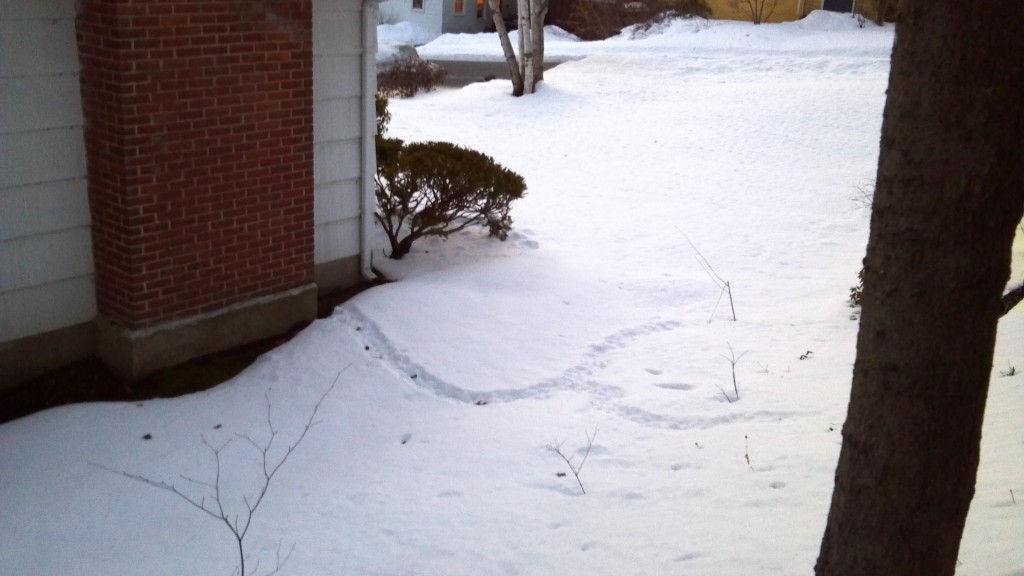
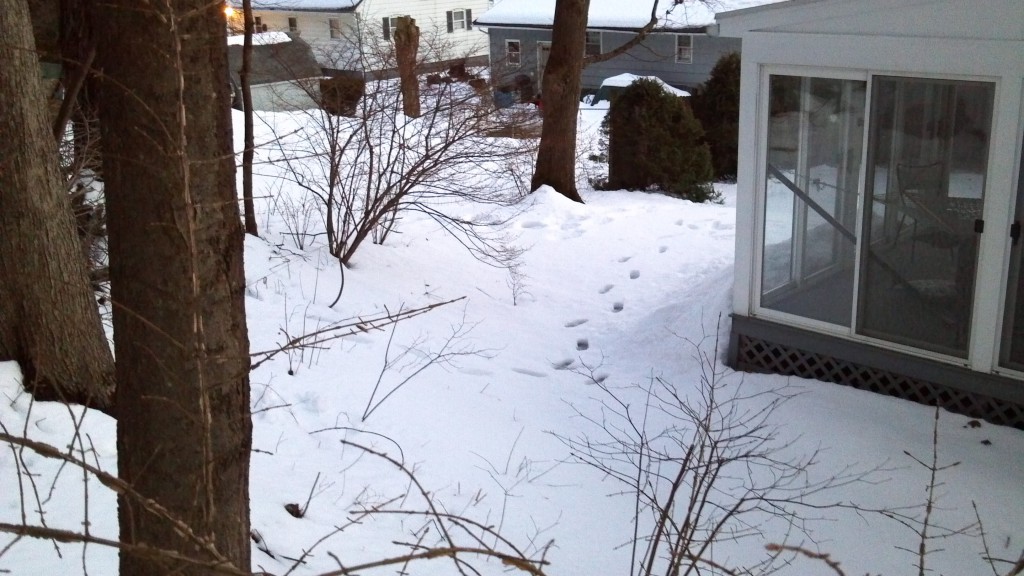
And of course, the snow blower leaves its own sort of tracks.
A arborist came over before the snows fell to trim the maple trees on our property. He didn’t bat an eye when I asked him not to chip the branches, saving himself gas and providing me with Patrick Dougherty quantities of building materials and fuel.
We returned from the winter holidays to find a blanket of snow on the ground, which highlights the way the leaf weir has changed the topography. Walking across it feels like solid ground.